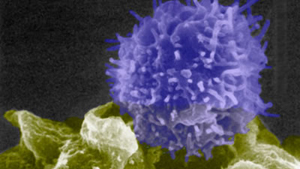How researchers used CRISPR gene editing to send immune cells after cancer

(credit: Lawrence Berkeley National Labs)
Last week, researchers published the results of a clinical trial that used CRISPR gene editing to create a large population of cancer-targeting immune cells. The trial was short, and the reprogrammed immune cells weren't especially effective against the cancer. But the technology, or something similar, is likely to be used in additional attempts to attack cancer and potentially treat a variety of diseases.
So, the trial provides a good opportunity to go through and explain what was done and why. But if you go back and re-read the first sentence, a lot was going on here, so there's a fair amount to explain.
Cancer and the immune systemCancers and the immune system have a complicated relationship. The immune system apparently eliminates many cancers before they become problems-people who are on immunosuppressive drugs experience a higher incidence of cancer because this function is inhibited. And, even once tumors become established, there's often an immune response to the cancer. It's just that cancer cells evolve the ability to evade and/or tamp down the immune response, allowing them to keep growing despite the immune system's vigilance.